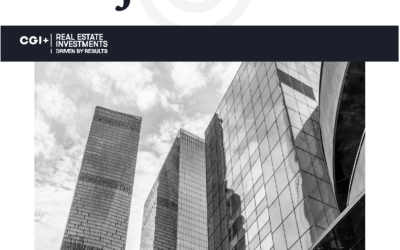In boom times and uncertain times alike, multifamily investments historically offer a safe harbor. That does not mean, however, that you can afford to neglect your due diligence when considering making a move in this market segment. A multifamily deal analysis is a must in terms of evaluating opportunities, pricing, returns, and short- and long-term outlooks. How do you do it?

How to Analyze Multi Family Investment Opportunities
Multifamily deal analysis is critical as it allows you to become proficient with using analysis tools (e.g., spreadsheets) at the very least. It also helps you develop a baseline for analyzing properties in your specific market and submarket, understand the needs of local renters, and evaluate the competitions’ offerings. And, of course, careful analysis allows you to determine which properties are worth making an offer on and to make appropriate bids.
So, how do you do it?
-
Start Your Multifamily Deal Analysis with the Right Questions
Even if you don’t have all the answers (yet), make sure you steer your mind in the right direction:
- What type of vacancy rate does the property have currently? If it’s high, why?
- Is the possibility of raising rental rates realistic?
- Will the property need upgrades and/or repairs? If so, how much will this cost you in the near-term? Long-term?
- Are major systems (HVAC, roof, etc.) in good operating condition?
- Why is the property on the market?
Make a list of any- and everything you can think of at this point. Then set about finding your answers.
-
Understand the Market
In a multifamily deal analysis, you must know what’s going on in the market. What are the current conditions? Where is your market headed? Freddie Mac’s Apartment Investment Market Index is a helpful resource – and it’s updated quarterly. You’ll get some useful insights and data on performance, multi family permits, employment, net operating income, and property price.
Additionally, examine the local area: what are typical rental rates? Are new properties and complexes being built?
-
Pull Out Your Calculator
Take a bit of time to do some simple math. A quick way to start is to divide the total rent a multifamily property is expected to bring in by the number of units. From there, plan on about 30-50% of your total income on expenses after you close the deal.
Take the same approach when you estimate necessary upgrades and repairs. In your analysis, subtract the anticipated expense of getting the property into rental shape from the value. Again, you want to estimate on the high side so you are prepared.
-
Determine Your Capitalization Rate
Your cap rate is used to indicate your expected rate of return. It is calculated by dividing the anticipated net income (minus expenses) by the multifamily property’s asset value. While not the only number with which you should be concerned, the cap rate is a useful tool in comparing similar potential investments.
So what is a “good” cap rate? It depends. Typically, we regard between 4% and 10% as good. However, there is also an element of risk to consider. A lower cap rate often indicates lower risk, while a higher cap rate indicates higher risk. So, “good” may be fine, but you may want “safe.” It is important to evaluate your own investment goals and risk tolerance.
-
Look at Unit Mix in Your Multifamily Deal Analysis
What is the makeup of the property, or the percentage of one-bedroom, two-bedroom, and three-bedroom units? What about studio apartment units? It is critical that you know what types of units are in demand for your specific market.
As mentioned, this is a very quick multifamily deal analysis. Your next step should be to consult CGI Strategies to learn more about multi family investment opportunities – and how you can capitalize on them to achieve your specific goals.

